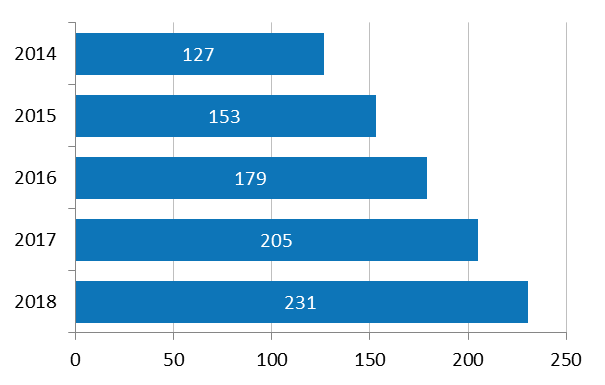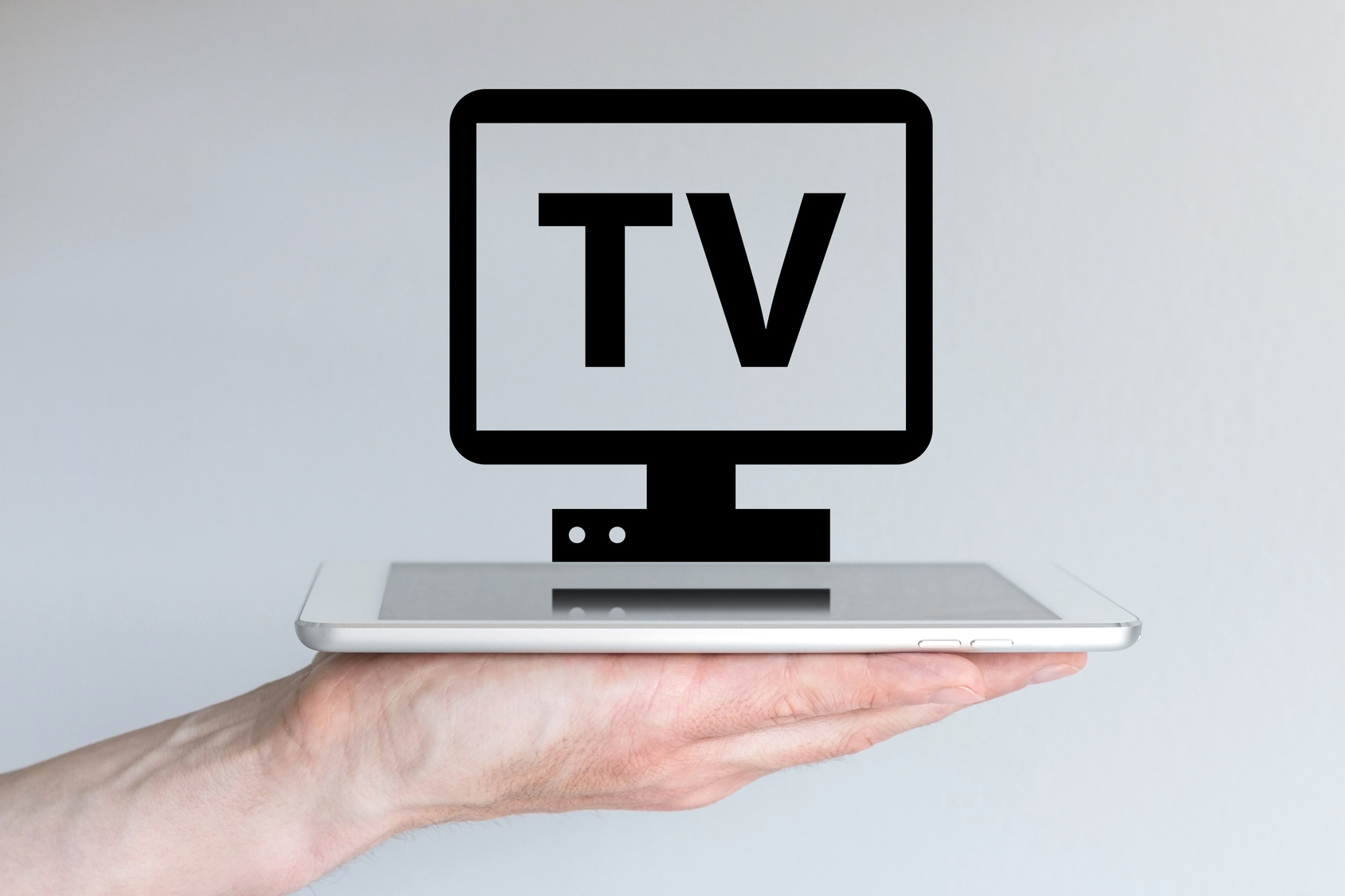One of the companies we have great respect for is NPD. In fact, some of our best industry friends are from this company. They recently sent me a press release with their updated research forecast for devices connected to TVs. Here is the news they sent out and a chart showing that 231 million devices are expected to be connected to the Internet by 2018.
“By the end of 2018, 231 million installed devices are expected to be connected to the Internet and able to deliver apps to TVs, representing 82 percent growth from 2014 to 2018, according to the Connected Home Entertainment Forecast report from global information company The NPD Group.
“The two largest drivers of growth will be the increased acceptance of connected televisions in the homes of U.S. consumers, as well as the continued adoption of streaming media players such as those offered by Google, Apple, Roku, and Amazon,” said John Buffone, Executive Director, Industry Analyst, Connected Intelligence, The NPD Group.
Forecasted # Installed & Internet-Connected Devices* Attached to TV

Base: U.S. Internet households
*Devices include connected TVs, streaming media players, video game consoles, and Blu-ray Disc Players
Source: The NPD Group/Connected Intelligence, Connected Home Forecast
I have to admit, this projection is impressive and my first reaction is this forecast is conservative. Many people have 2, 3 and even 4 TVs in the house and, with Chromecast costing $39 and other options (except Apple’s new Apple TV) being well under $80, one would think, at the very least, they would have two or three of theses devices by 2018.
I happened to be with my friend Stephen Baker of NPD this week and, as we rode to the airport together, I asked him about this research. He says there are around 105 million homes in the US and this research projects about 80% of those homes will have at least two of these devices (with some having a bit more). That’s how they came up with the 281 million sold annually by 2018.
But he also stated that, in the future, demand for TVs will decline. Today, while people buy TVs for many rooms in a house, NPD thinks in the end most will have just two large screen TVs and will use tablets for viewing in other rooms in the house. Indeed, with pretty much all of the major networks creating online versions of their content or expanded shows on Netflix, Hulu, and other streaming services, using a tablet for TV viewing makes sense.
One of the companies that is hedging their bets on this is Samsung. They recently introduced an 18-inch tablet that, on the surface, seems to be huge for a tablet. But they actually see this more as a mobile TV and, while not positioning this specifically as such, they are hoping many buy it and use it for that purpose. On a personal level, I have a 13-inch Samsung Galaxy tablet on my bedside table and have it connected it to my Slingbox and the other streaming services I subscribe to and use only as a TV. It works perfectly and kept me from getting a TV for the bedroom.
Although the iPad Pro will never be positioned as a TV, it too is connected to my Slingbox and streaming services and I have caught myself using it on the patio and other rooms in the house many times since I started testing it. Actually, I started doing this with the original iPad when it came out and love the idea that a tablet could deliver a mobile TV experience.
I believe Samsung is really on to something with this 18″ tablet/TV concept. When Dell brought out their 18″ all-in-one, we also used it for that purpose. It was a mobile TV. Of course Dell did not design it for this use but many used it that way anyway. And to be fair, some of the larger tablets and smaller all-in-ones that have come out have probably been used as a mobile TV too.
Last year I spent some time with Intel’s chairman Andy Bryant and he told me that his kids discovered that the Dell 18 inch all-in-one was great for streaming media and games. Once he saw that how his kids used the Dell product he was hooked on the idea of larger tablets and smaller all-in-ones being used for these purposes.
But with Samsung being a major TV vendor and partially positioning this new 18” tablet as a mobile TV, if it is even mildly successful it could launch a whole new purpose for larger tablets. In the past, a mobile TV had to have a TV tuner inside for it to even be classified as a portable television. With video streaming and products like the Slingbox and direct delivery of TV content from the networks and specialty sources like HBO, Showtime, all one needs to have is a good WiFi connection to turn any tablet into a TV and a movie playback device.
The only drawback at the moment is the lack of access to live local content but that sacred cow will soon fall as more and more people become switchers and force the local stations to stream their services in the near future. Actually, in my case and using my Slingbox connection to the TV in my study, I get all the local content I want, making any tablet and especially my 13″ Samsung tablet a full blown mobile TV.
This is an idea whose time has come. People are very mobile these days and are watching streamed TV shows and movies even on small smartphone screens and small to medium-large tablets like the iPad Air. However, while watching video on smaller screens is OK, once these devices get to the 13-18 inches size, their potential to deliver an actual TV-like experience will become much more desirable and the concept of a mobile TV could really take off.

I think that one of the issues underlying your observations is that traditional shared-viewing (which takes over the room) might have made sense in an era when TVs were expensive and the amount of content was limited. However, nowadays, viewing devices are cheap, there is an abundance of content and the traditional TV interfaces are pretty hopeless in navigating content. I can perfectly understand why we seem to be ending up with a personal screen and just 1 or 2 large screens for shared-viewing.
Having grown up in the 50s, I still cannot watch entertainment TV or movies alone. I find the experience sleep inducing. I will watch only with my spouse or a friend enjoying the occasional remarks and quips as we view.
I’d say TV v1 was also Social Media v1.
Your remark is entirely responsible for my watching Community S01E15 again right now. For the 15th time. https://en.wikipedia.org/wiki/Romantic_Expressionism
I’ve seen teens spend a whole movie on their phones live commenting with friends.